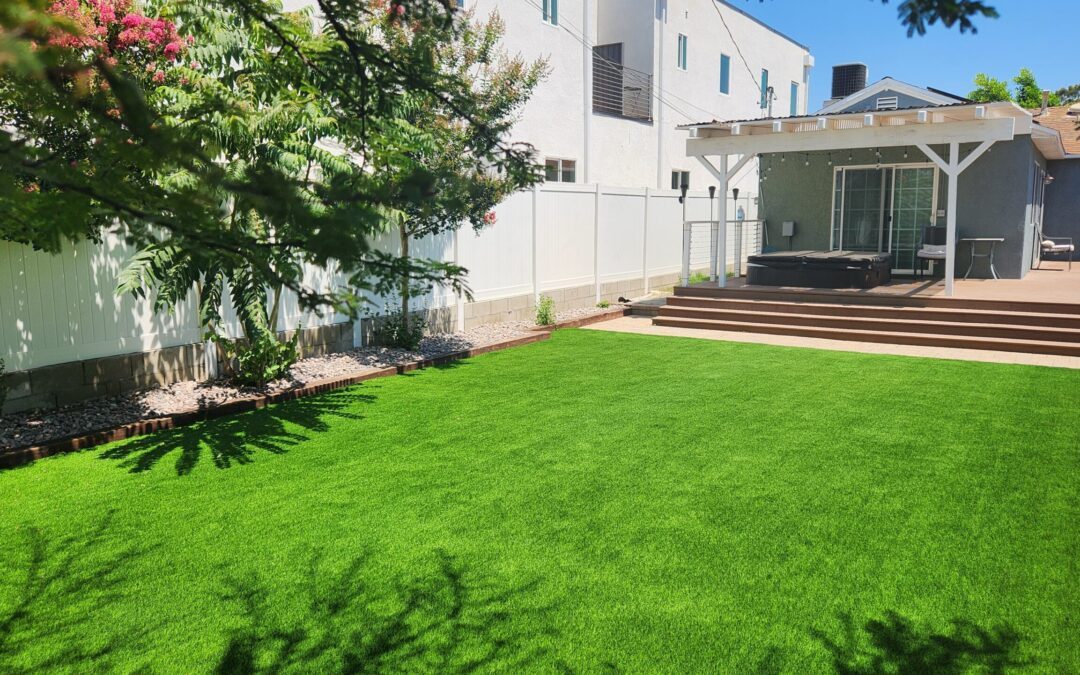Due to its low care requirements and long lifespan, artificial turf has become a popular option for landscaping, sports fields, and leisure areas. Although it has several advantages over real grass, it is not damage-proof. To ensure the durability of artificial turf and safeguard your investment, it is crucial to understand the most typical ways it can be damaged. In this article, we’ll look at some of the main reasons why artificial grass becomes damaged and offer advice on how to fix or prevent the problems.
Heavy Foot Traffic: Heavy foot traffic is one of the most frequent causes of artificial turf deterioration. Continuous use can cause the fake grass fibers to wear down and compact, resulting in a flattened and less appealing appearance, whether on sports fields, playgrounds, or high-traffic commercial areas. Consider creating designated paths or putting up barriers to restrict foot traffic away from delicate regions to prevent undue wear and tear. To uniformly distribute the impact, rotate the use of several artificial turf areas on a regular basis.
Improper Installation: An artificial grass that has been installed incorrectly may experience a number of issues, such as wrinkling, uneven surfaces, poor drainage, and early wear. For the installation process, it is essential to hire qualified experts. To prevent further problems, they will guarantee enough drainage, correctly prepare the base, and fasten the turf in place. Cutting corners during installation may result in immediate cost savings, but they can later result in expensive repairs or replacements.
Lack of proper upkeep: Although artificial turf requires less maintenance than real grass does, it still needs attention to stay in peak condition. Regular upkeep is crucial, including brushing the fibers to keep them upright and clearing away dirt. Failure to do so might lead to matting and compaction, which would make the turf more vulnerable to harm. Additionally, routine cleaning to eliminate organic debris, dirt, and dust will aid in preventing the establishment of mold and mildew, which can damage turf.
Prolonged Sunlight and Heat Exposure: In warmer climates, prolonged direct sunlight exposure can cause artificial turf to get rather warm. Overheating can harm the fibers, causing them to gradually lose their color and strength. Consider utilizing artificial turf that is lighter in color to reflect sunlight and lessen heat absorption as a solution to this problem. The turf can be cooled down by being watered while it’s scorching outside.
Sharp Things and Pet Damage: Sharp things, such gardening tools or high-heeled shoes, can rip or pierce the synthetic grass, resulting in permanent harm. Additionally, pet pee can leave scents and, if not cleaned up right away, may fade the turf or otherwise harm it. Keep pointed things away from the artificial turf area and clean up pet feces right away to prevent this kind of damage. Consider purchasing artificial turf for pet owners that has drainage that is specially developed to address pet-related difficulties.
Chemical Exposure: The synthetic fibers of the turf can be harmed by exposure to some chemicals, such as abrasive cleaners, insecticides, and petroleum-based products. Always use the gentle, non-toxic cleaners the manufacturer recommends when cleaning artificial turf. To avoid inadvertent spills or leaks, keep any chemicals away from the lawn.
Poor Drainage and Waterlogging: Longevity of artificial turf depends on proper drainage. Insufficient drainage can cause waterlogging, which harms the turf and serves as a haven for mildew and germs. Make sure the base is sloped correctly during installation to enable effective water discharge. To avoid jams and obstructions, the drainage system should be regularly inspected and maintained.
Extreme weather conditions can harm artificial turf, despite the fact that it is made to survive a range of climates. Examples include strong storms, hail, and extremely low temperatures. Remove debris as soon as possible to avoid putting too much pressure on the lawn, which could cause it to split or flatten. Consider purchasing more resilient and weather-resistant artificial turf if your region frequently encounters extreme weather.
To sum up, artificial turf can offer a lovely, low-maintenance substitute for real grass, but it is not impervious to damage. The lifespan of your artificial grass can be increased by adopting preventive steps, being aware of the most frequent causes of artificial turf damage, and protecting your investment. If you want your artificial grass to stay and look good in your outdoor space, regular maintenance, appropriate installation, careful use, and avoiding damaging components are essential.

